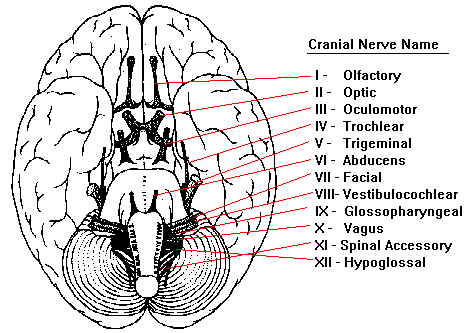La pancreatitis aguda se caracteriza clínicamente por dolor abdominal acompañado de
elevación de las enzimas pancreáticas en plasma y orina.
I. EPIDEMIOLOGIA
- Su incidencia parece haber aumentado en los últimos años.
- La edad de presentación se sitúa e torno a los 55 años siendo en un gran número de casos entre los 30-70 años; aunque puede aparecer a cualquier edad.
- En cuanto a presentación por sexo: la relación hombre / mujer , en función de la etiología; alcohol, litiasis biliar será de la mitad en España.
- Mortalidad del 5.1 al 17,3%
II. ETIOLOGIA:
- La etiología de alcohol y litiasis biliar se encuentra entre el 60-85 %
- Hay una presentación idiopática (no se explica la causa) ; aunque cada vez se relaciona más con etiología biliar.
-A continuación vamos a citar, una relación de causas de Pancreatitis Aguda:
I. EPIDEMIOLOGIA
- Su incidencia parece haber aumentado en los últimos años.
- La edad de presentación se sitúa e torno a los 55 años siendo en un gran número de casos entre los 30-70 años; aunque puede aparecer a cualquier edad.
- En cuanto a presentación por sexo: la relación hombre / mujer , en función de la etiología; alcohol, litiasis biliar será de la mitad en España.
- Mortalidad del 5.1 al 17,3%
II. ETIOLOGIA:
- La etiología de alcohol y litiasis biliar se encuentra entre el 60-85 %
- Hay una presentación idiopática (no se explica la causa) ; aunque cada vez se relaciona más con etiología biliar.
-A continuación vamos a citar, una relación de causas de Pancreatitis Aguda:
-
- Colelitiasis
-
- Etilismo
-
- En el curso de un Postoperatorio de Cirugía abdominal /Bypass aortocoronario.
-
- CPRE
-
- Traumatismo abdominal cerrado
-
- Hipertrigliceridemia
-
- Déficit de CII apoproteina
-
- Hipercalcemia
-
- Insuficiencia renal
-
- Virus: Parotiditis Herpes virus Cosachkie, Echovirus.
-
- Ascaridiasis
-
- Mycoplasma
-
- Salmonella , Campylobacter yeyuni
-
- SIDA
-
- Fármacos (Azatiopirina, estrógenos, Diuréticos, Corticoides, Sulfonamidas.
-
- LES, Vasculitis, Angeitis necrotizante
-
- P. Trombocitopénica trombopática
-
- Ulcera péptica penetrante
-
- Obstrucción ampolla de Vater
-
- Enteritis regional
-
- Divertículo duodenal
-
- Tumores pancreáticos.
-
- Páncreas divisum
-
- Veneno de Escorpión ( Tityus trinitatis)
CLINICA
Dolor abdominal (95-100%) de instauración súbita, que se intensifica rápidamente hasta alcanzar su pico de unos minutos a una hora, continuo, y se localiza en epigastrio, donde queda fijo o se irradia a uno o ambos hipocondrios, espalda, zona periumbilical y en cinturón.. A la exploración abdominal, el dolor a la palpación en epigastrio siempre aparece y con frecuencia se percibe sensación de ocupación o empastamiento a ese nivel o incluso una masa epigástrica en algunos casos, a veces con defensa pero sin claros signos de reacción peritoneal. Los ruidos intestinales son escasos o están ausentes.
Ictericia (25-30%) ó rubicundez facial, relacionada esta última con la liberación de histamina y otras sustancias vasoactivas. En los casos graves, el compromiso hemodinámico es evidente, con hipotensión, taquicardia o incluso shock establecido Vómitos y náuseas están presentes 70-90% de los casos y suele haber detención del tránsito intestinal desde el comienzo del cuadro
Distensión abdominal (60-70%) Febricula (70-85%) Hematemesis (5%) Hipotensión (20-40%)
Cuadros confusionales (20-35%). El dolor suele no aparecer generalmente en los más graves, y el cuadro clínico se ve dominado por los vómitos, síntomas de manifestaciones sistémicas, shock o por la descompensación cetoacidótica, sin causa aparente, en un diabético.
En los casos graves también están presentes la Disnea (<10%) taquipnea, los signos de insuficiencia cardiaca, la confusión mental o la tetania, todo lo cual expresa el compromiso multisistémico. Las equimosis abdominales de localización periumbilical (signo de Cullen) (<5%) o en los flancos (signo de Gray-Turner) (<5%) son muy características, de la pancreatitis aguda así como manifestaciones tardías de la enfermedad, generalmente en extremidades inferiores, con aspecto similar al eritema nudoso o a la paniculitis supurada. (Necrosis grasa subcutánea (<1%)
-
- Fármacos (Azatiopirina, estrógenos, Diuréticos, Corticoides, Sulfonamidas.




